Liberty Times (LT): From your experience, is the National Palace Museum tradition-heavy and resistant to change as an institution?
Lin Jeng-yi (林正儀): The museum is in a unique situation where it has ingrained traditions, but also a plethora of different views generated by its staff or other individuals. The museum often finds it impossible to implement policies through direct administrative orders.
The museum’s management has to find ways to convey how such policies have come to be, in a positive manner, to these staffers. We also have to, if possible, endeavor to avoid sensitive issues such as political ideologies.
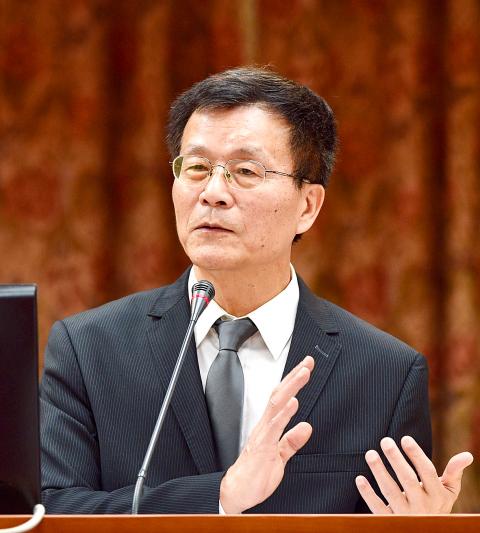
Photo: Peter Lo, Taipei Times
Due to such difficulties, personnel costs and day-to-day administrative work account for 80 percent of the museum’s annual budget.
Despite such difficulties, we have produced our own polices. Take, for example, the policy to promote Taiwan through the National Palace Museum. It provides clear instructions that the museum should endeavor to break out of its formerly cloistered administrative functions and connect with the local culture.
The policy led to the idea of making the museum more modern and more approachable for the public. We need to consider how the museum is to connect with local culture and society, and how to share the values that have heretofore been limited within the museum with the public.
LT: Is “making the museum more public” a concept, or an actual policy?
Lin: The concept of making the museum more public, managed by professionals and increased public participation revolves around organizational reform.
The museum is going to have to deliver a four-year plan for changes in organizing its personnel based on exhibit contents, how the public will be involved in such decisions and how the museum will cooperate with outside sources.
I hope the museum will eventually connect with other Taiwanese museums in terms of research results or techniques to repair items. We are also seeking to come up with ways to motivate the public to visit the museum so that it would be better accepted and understood by Taiwanese society.
LT: You have mentioned the project to promote Taiwan through the museum. Is there a plan behind the project, or is it just an idea?
Lin: We have, over the past year, been coming up with plans to help implement the project. To achieve this goal, the museum’s international exchange office will have to increase its efforts to promote the museum, or alternatively, the museum will to have to launch exhibition tours or exchange artworks with international museums through a four-year program.
The museum has to date largely leaned on China-centric thoughts, in both political ideology and arts development. The museum should endeavor to explore the possibility of expressing the exhibition of art in a more local manner, or in the vein of Eastern-style art and culture.
Through such endeavors, we hope to encourage our citizens and foreigners to re-discover art and culture through the lens of pan-Asia or pan-Taiwan, instead of a China-centric view.
Should it become possible to consider the culture and art of the East by identifying oneself as Taiwanese, then we have subjectivity of research, through which we could offer difference of interpretations, which will then facilitate the West’s recognition of our culture and art.
Therefore, it is important for us to have subjectivity in our research methodology so we could offer our interpretation of the museum’s collection.
As there are no precedents in Taiwan, the museum should gradually establish such systems and incorporate academic methodology and results. Perhaps, these different research projects will allow people to understand the depth of Taiwanese culture.
To offer a more dynamic portrayal, and seeing things from different subjective views, is a great challenge for traditional methodology of research and preservation techniques practiced by the museum.
Only through a more open manner can we promote Taiwan through the National Palace Museum.
LT: What is the museum’s vision for the future following the four-year plan?
Lin: The museum aims to become a legal person, thereby attaining the goal of being managed by professionals. It also hopes to attract foreign professionals to maintain the museum’s competitiveness and prestige as a world-class museum.
Making the museum into a foundation is an issue that involves the nation, and all other national museums. This is an established consensus within the Executive Yuan, and in the future, all museums under the jurisdiction of the Ministry of Culture will be incorporated under one single foundation.
We are considering emulating how the Smithsonian Institution is run — its operations are overseen by a Board of Regents, including the vice president of the United States, as well as 16 other individuals.
The Smithsonian Institution openly recruits its directors for each branch according to what is needed, and the candidates are not limited to US citizens either.
Should such an institution be established in Taiwan and a similar board set up, the National Palace Museum would only be one museum among many, and the director of which, if needed, could be a foreigner.
Perhaps it would become possible for the director of the Metropolitan Museum of Art to be the director of the National Palace Museum as well.
As foundations could legally raise funds, it would become possible to offer high pay and hire professional directors that seek the best interests of the museum.
Therefore, the museum should be opened to the public so it could be better managed; as for organizational reform, the museum should look into which foreign museum has a better method of operation.
LT: Can you give a brief description of what you think of the National Palace Museum?
Lin: The museum should be removed from political intervention and should become a more professional museum. It should be allowed more flexible international interaction with other museums to accrue more renown and international competitiveness.
Change is a necessary path that must be taken.
It is not easy to change the traditions of a museum with a long history, and there must be consensus within for change to happen. We have spent the past year trying to convey our thoughts on the changes, and while they did not like to hear of such talk, they have gradually come around and are beginning to accept it.
Translated by staff writer Jake Chung
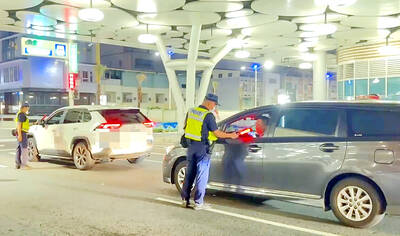
TRAFFIC SAFETY RULES: A positive result in a drug test would result in a two-year license suspension for the driver and vehicle, and a fine of up to NT$180,000 The Ministry of Transportation and Communications is to authorize police to conduct roadside saliva tests by the end of the year to deter people from driving while under the influence of narcotics, it said yesterday. The ministry last month unveiled a draft of amended regulations governing traffic safety rules and penalties, which included provisions empowering police to conduct mandatory saliva tests on drivers. While currently rules authorize police to use oral fluid testing kits for signs of drug use, they do not establish penalties for noncompliance or operating procedures for officers to follow, the ministry said. The proposed changes to the regulations require
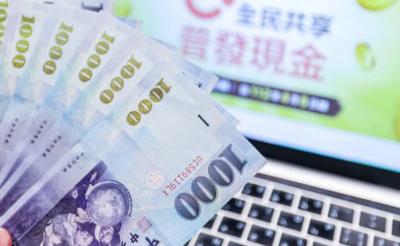
The Executive Yuan yesterday announced that registration for a one-time universal NT$10,000 cash handout to help people in Taiwan survive US tariffs and inflation would start on Nov. 5, with payouts available as early as Nov. 12. Who is eligible for the handout? Registered Taiwanese nationals are eligible, including those born in Taiwan before April 30 next year with a birth certificate. Non-registered nationals with residence permits, foreign permanent residents and foreign spouses of Taiwanese citizens with residence permits also qualify for the handouts. For people who meet the eligibility requirements, but passed away between yesterday and April 30 next year, surviving family members
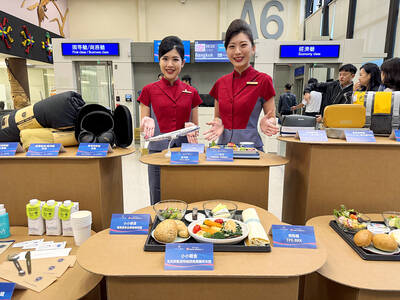
China Airlines Ltd (CAL) yesterday morning joined SkyTeam’s Aviation Challenge for the fourth time, operating a demonstration flight for “net zero carbon emissions” from Taiwan Taoyuan International Airport to Bangkok. The flight used sustainable aviation fuel (SAF) at a ratio of up to 40 percent, the highest proportion CAL has achieved to date, the nation’s largest carrier said. Since April, SAF has become available to Taiwanese international carriers at Taipei International Airport (Songshan airport), Kaohsiung International Airport and Taoyuan airport. In previous challenges, CAL operated “net zero carbon emission flights” to Singapore and Japan. At a ceremony at Taoyuan airport, China Airlines chief sustainability
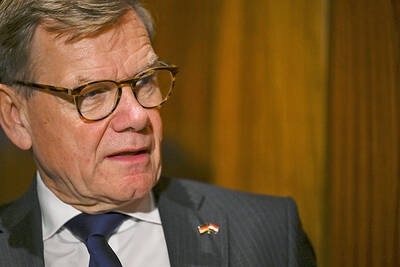
‘ONE CHINA’: A statement that Berlin decides its own China policy did not seem to sit well with Beijing, which offered only one meeting with the German official German Minister for Foreign Affairs Johann Wadephul’s trip to China has been canceled, a spokesperson for his ministry said yesterday, amid rising tensions between the two nations, including over Taiwan. Wadephul had planned to address Chinese curbs on rare earths during his visit, but his comments about Berlin deciding on the “design” of its “one China” policy ahead of the trip appear to have rankled China. Asked about Wadephul’s comments, Chinese Ministry of Foreign Affairs spokesman Guo Jiakun (郭嘉昆) said the “one China principle” has “no room for any self-definition.” In the interview published on Thursday, Wadephul said he would urge China to